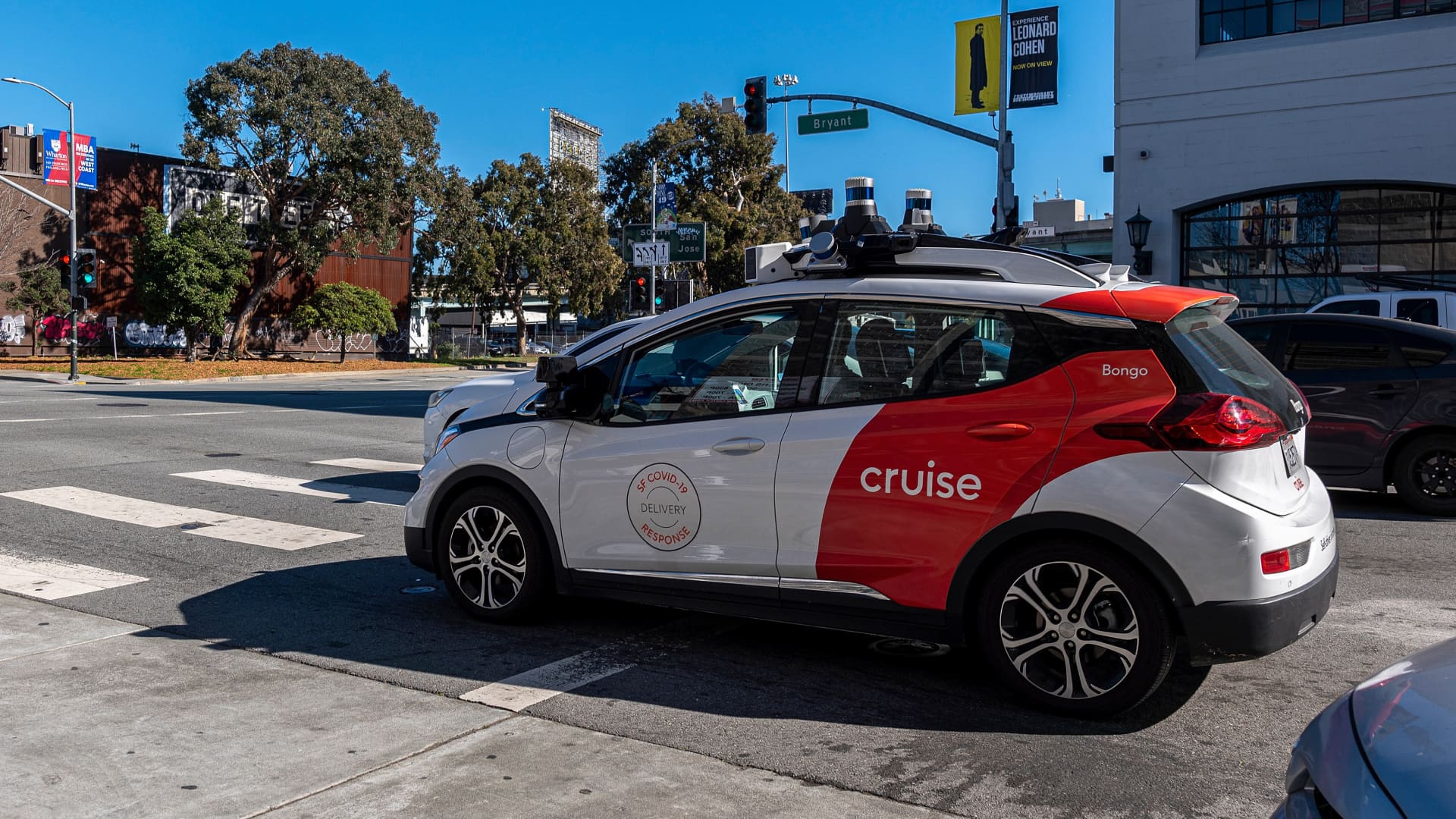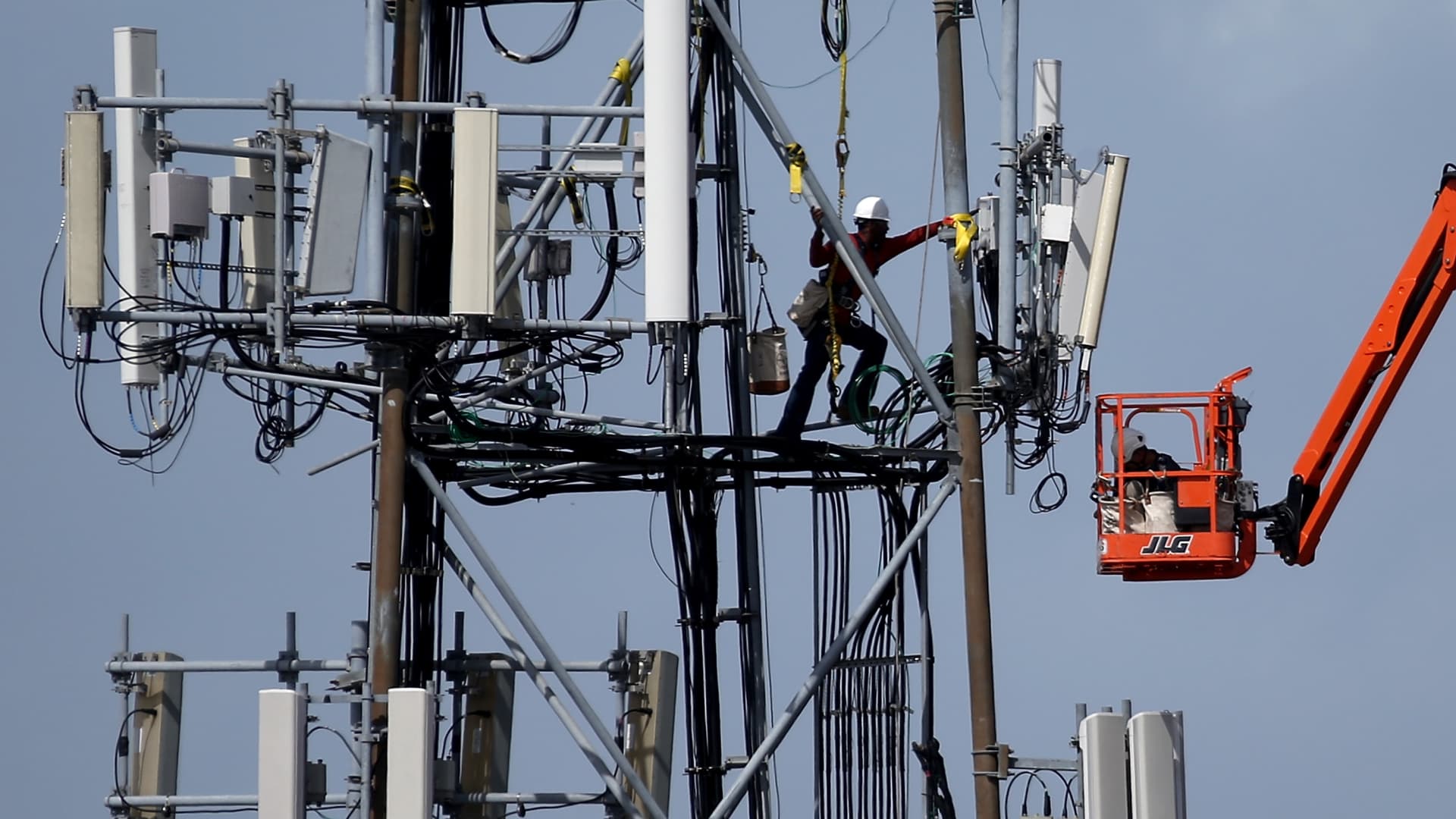
A Cruise vehicle in San Francisco, California, on Wednesday Feb. 2, 2022.
David Paul Morris | Bloomberg | Getty Images
Cruise, the autonomous vehicle startup owned by General Motors, has paused all of its driverless operations after collisions led to investigations, a disagreement with state regulators, and a suspension of its licenses in California earlier this week.
The autonomous vehicle maker, founded by CEO Kyle Vogt in 2013, had previously initiated driverless operations in San Francisco, Austin, Phoenix, Houston, Dallas and Miami.
GM said on Tuesday that the company lost roughly $1.9 billion on Cruise through September this year, including $732 million in the third quarter alone. On that same day, after GM’s third quarter earnings update, the California Department of Motor Vehicles announced that it had suspended Cruise’s deployment and testing permits in the state.
The orders of suspension from the DMV followed a barrage of safety concerns and incidents since Cruise received approval in August to conduct around-the-clock robotaxi service in San Francisco. The California Public Utilities commission also suspended a license giving Cruise permission to transport and charge passengers for rides in its robotaxis in the state.
In one high-profile incident in early October, the human driver of another vehicle struck a pedestrian in San Francisco, launching her into the path of a Cruise self-driving car. According to DMV records obtained by CNBC, the Cruise autonomous vehicle came to a complete stop and “subsequently attempted to perform a pullover maneuver while the pedestrian was underneath the vehicle.”
The DMV record said, “The AV traveled approximately 20 feet and reached a speed of 7 mph before coming to a subsequent and final stop,” and “the pedestrian remained under the vehicle.” The DMV wrote in its orders of suspension sent to Cruise, “the manufacturer’s vehicles are not safe for the public’s operation” and that they “may lack the ability to respond in a safe and appropriate manner during incidents involving a pedestrian.”
On LinkedIn on Thursday night, Cruise wrote:
“The most important thing for us right now is to take steps to rebuild public trust. Part of this involves taking a hard look inwards and at how we do work at Cruise, even if it means doing things that are uncomfortable or difficult.
In that spirit, we have decided to proactively pause driverless operations across all of our fleets while we take time to examine our processes, systems, and tools and reflect on how we can better operate in a way that will earn public trust.
This isn’t related to any new on-road incidents, and supervised AV operations will continue. We think it’s the right thing to do during a period when we need to be extra vigilant when it comes to risk, relentlessly focused on safety, & taking steps to rebuild public trust.”
The move comes two days after GM CEO Mary Barra said several times that the automaker believes Cruise vehicles are safer than human drivers.
“We do believe that Cruise has tremendous opportunity to grow and expand. Safety will be our gating factor as we do that, and continuing to work with the cities that we’re deploying in,” Barra said during a third-quarter earnings call, saying GM plans to support Cruise’s expansion.
Barra mentioned Cruise on Tuesday as an example of the company’s history of “defining the future of transportation,” and said the self-driving venture “continues to push the boundaries of what AV technology can deliver to society.” She said safety “is always at the forefront, and this is something they are continuously improving.”
Cruise will keep running its autonomous vehicles with human safety drivers behind the wheel, supervising the drives, the company also said on Thursday.
A GM spokesperson referred all questions to Cruise, declining to comment on any involvement of the automaker or Barra in the decision to pause operations. Honda, a minority shareholder of Cruise, did not immediately respond for comment.







![What Is a Markup Language? [+ 7 Examples] What Is a Markup Language? [+ 7 Examples]](https://static.semrush.com/blog/uploads/media/82/c8/82c85ebca40c95d539cf4b766c9b98f8/markup-language-sm.png)